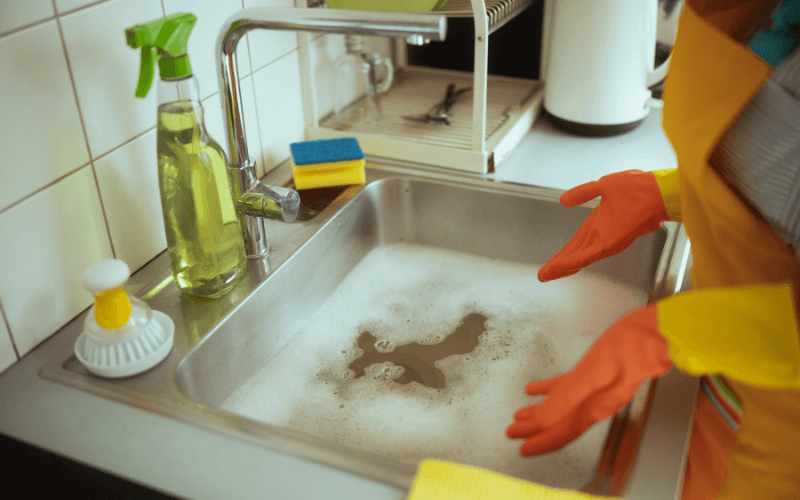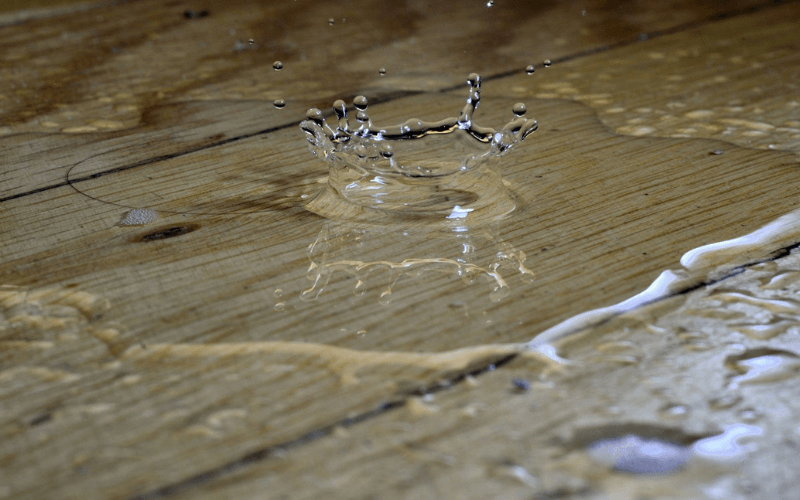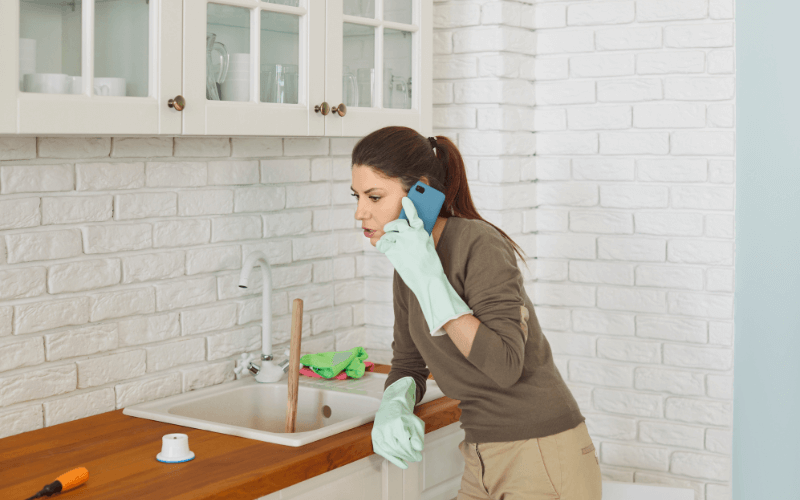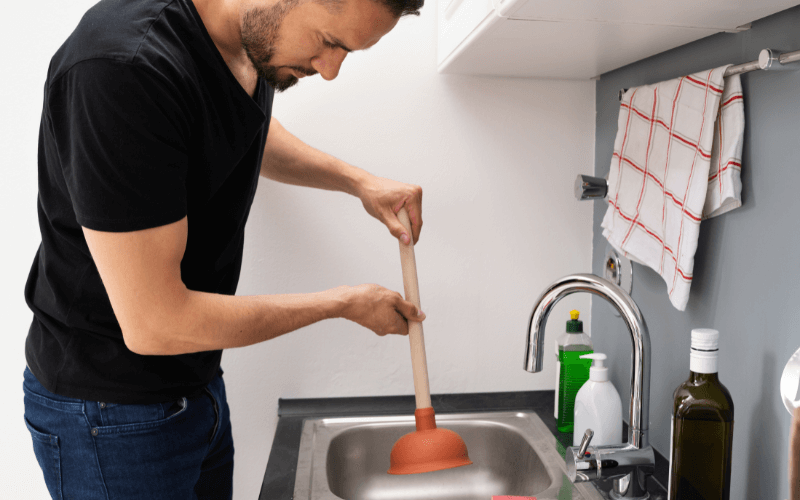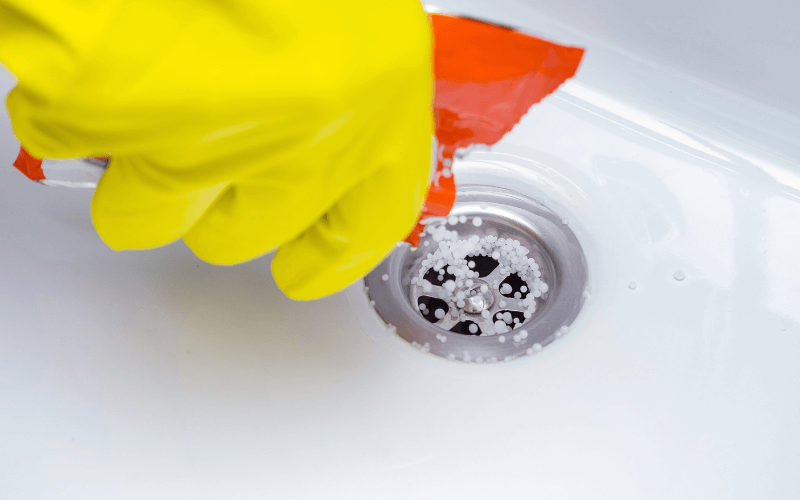Drain delamination occurs when the layers of pitch fibre pipes separate, causing the drain to warp, blister, and lose its structural integrity. This is primarily due to prolonged exposure to hot water, fats, oils, and grease (FOG), which weaken the coal-tar pitch bonding the pipe layers together. Over time, this leads to restricted wastewater flow, blockages, and even collapsed drains.
If your property has pitch fibre drains, understanding the risks of delamination can help you prevent major drainage issues. Below, we explain why this happens, the warning signs to watch for, and how our Bristol and Bath drainage experts repair delaminated pipes.
Many houses, flats, schools, hospitals and other buildings built between the 1940s and 70s have drains made of pitch fibre. Unfortunately, this inexpensive, lightweight material – a mixture of coal-tar pitch and fibrous wood cellulose – is prone to delamination, as we’ll explain. If pitch fibre drains carry wastewater away from your property, it’s vital to familiarise yourself with this destructive process and its causes to help protect your drainage system.
As a trusted Bristol and Bath drainage company, Mega-Rod has the expertise required to successfully diagnose and treat drain delamination. If you’re worried about your pitch fibre drains, or you want us to confirm what your drains are made of by conducting a CCTV drain camera survey, simply get in touch.
When we talk about pitch fibre drain delamination, we mean that a pipe’s interior has separated into its constituent layers. In other words, the layers of coal-tar pitch and cellulose that were originally bonded together have gradually pulled away from each other.
A drain undergoing delamination becomes deformed; it loses its cylindrical shape as the walls blister, warp and sag. The drain’s diameter decreases dramatically, which severely restricts the flow of wastewater.
What’s more, pitch fibre drains’ push-fit joints (i.e. connections that don’t need gluing or soldering) loosen during delamination, leading to leaks. When wastewater seeps out of drains, it can attract invasive roots and destabilise the pipework (as soggy soil tends to shift and sink).
The longer delamination continues the weaker the pipework will become. Severe delamination can even lead to collapsed drains.
If you notice any of the following drainage warning signs at your property, your pitch fibre drains could well be congested or blocked due to delamination, and you’ll need assistance from a reputable drainage company such as Mega-Rod:
The major cause of pitch fibre drain delamination is prolonged exposure to what’s known in the drainage industry as FOG: used cooking fat, oil and grease. These runny rogue substances are often poured down sinks in the mistaken belief they won’t harm drainage systems when they should actually be placed in sealable containers and thrown away with other kitchen waste. And the popularity of modern convenience foods means drains are likely to be exposed to much more FOG today than was the case years ago.
When fat, oil or grease enters your drains, it’s hot enough to soften the coal-tar pitch in the walls. This weakens the bonds between the layers of pitch fibre, leading to delamination. To make matters worse, FOG congeals as it cools and therefore forms obstructions. A drain that’s already narrowed significantly due to being delaminated could get completely blocked by a build-up of solidified oil, for instance.
Even if you don’t allow traces of roast dinners or microwave meals to go down the plughole, you’re bound to run hot water regularly, and doing so can also soften the coal-tar pitch.
Age-related deterioration is also linked to drain delamination. Any pitch fibre drains still in use today have exceeded their intended 40-year lifespan, so their risk of structural instability is greater and they’re more likely to need drain repairs.
Delamination affects a wide range of multi-layered materials/objects. In addition to pitch fibre, fibreglass, plywood, slate and painted surfaces frequently delaminate. For example, if you’ve seen layers of paint peeling off iron railings, you’ve seen delamination in action.
But in terms of drainage, only drains made of pitch fibre delaminate. Other common drain materials, such as clay and plastic, don’t behave in the same troubling way. ‘This sort of pipe has posed specific problems over and above other designs,’ says property industry resource Sava in its pitch fibre drains guide.
When checking pitch fibre drains for delamination, we perform a CCTV drain inspection. If this reveals layers of pitch fibre peeling off drain walls and associated congestion/blockages, the pipework will need to be cleared, reshaped, cleaned and reinforced.
This kind of drain repair involves unblocking drains then dragging a bullet-shaped re-rounding tool (which is sometimes called a ‘pig’, because it’s heavy and squat) through them to restore their cylindrical shape. The pipework is then cleaned with metal brushes to remove any debris left by the re-rounding tool. Lastly, drain walls are made strong and watertight with a resin-soaked drain liner.
If you suspect your pitch fibre drains are delaminating, call Mega-Rod today on 01225 422980 for expert Bristol and Bath drain repairs.
